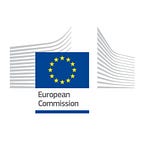The EU Space Programme: Seven ways you didn’t know it benefits you!
When we think of achievements in space, we think about the conquest of the Moon, Mars, or the discovery of a new exoplanet in the galaxy. But did you know our space programmes actually have an impact on our daily life on Earth? Read on to find out.
1. Tackling climate change
Our space programme is one of our best assets in the fight against climate change on Earth.
The Copernicus programme is the world leader in Earth observation, essential to understanding climate systems. Users can access a wide variety of instrumental data records, ranging from historical weather observations to the latest measurements from space. All this information — such as the precise area affected by pollution, type of pollution, air and ocean streams — gives us high-performing analytical tools to help us mitigate the effects of climate change.
For example, Copernicus helps us respect the Paris Agreement through accurate forecasts and analyses of CO2 concentrations and emission hotspots. This information can be used by states, agencies, or NGOs to better target and reduce high-emission areas. With this data, stakeholders can better implement and respect the 1.5°C global temperature increase limit set out in the Paris Agreement.
To tackle climate change, the Copernicus Atmosphere Monitoring Service provides data and information about atmospheric composition — such as air quality, through forecasts, retrospective data records and analyses on the current situation. The Copernicus Climate Change Service supports research and institutions by providing qualitative input on climate (past, present and future) in Europe and throughout the world.
With the environment becoming increasingly unreliable and prone to natural disasters, Copernicus products and services are becoming essential to respond swiftly and save lives.
When Hurricane Irma hit Florida in 2017, the Copernicus Emergency Service (EMS) monitored the hurricane impact and delivered a total of 65 emergency mapping products for the affected areas, helping authorities to take precautionary measures and monitor the crisis.
When fires were ravaging the Amazon last summer, the Copernicus Atmosphere Monitoring Services were central in monitoring the over 4000 fires and also helping monitor the 228 megatonnes of carbon dioxide released into the atmosphere. Thanks to the activation of the Copernicus Emergency Services, a swift response to the fire was ensured, helping civil protection authorities fine-tune their operations and avoid unnecessary damages.
2. Monitoring oil spills
Oil spills are among the worst ecological disasters for oceans. They affect marine ecosystems, biodiversity and the economy. To help us respond promptly, the Copernicus Marine Environment Monitoring Service develops forecasts and monitoring models that are used by national authorities and are adapted to respond to specific challenges. Portugal, for example, used Copernicus models to develop an online service that provides valuable insights about potential oil drifts in the Atlantic Ocean. This platform offers free and up-to-date information for developing dashboards and provides accurate drift forecasts that can help us limit the damage caused by oil spills, save species and protect the ocean.
3. Saving lives during natural disasters like floods
Floods endanger human lives, damage infrastructure and are costly for society. The Copernicus services have developed a series of products and datasets that national authorities use at the local level to respond to floods. France, for example, has developed a series of downscaled models to better analyse the probability of rivers flooding in the south of France. A 3D-algorithm can predict areas that will potentially flood. This way local authorities respond promptly, helping save lives.
Copernicus Sentinels have been an important ally to monitor floods in Northern Italy that have recently led to record high water levels in Venice. Copernicus Sentinel 1A and Sentinel-1B were able to observe through clouds and provide data regardless of cloud cover and sun illumination.
4. You have a caring friend, anytime, anywhere
Thanks to Galileo, help is always around the corner.
When you call 112 from your mobile phone, the emergency services (if they have already deployed the “Advanced Mobile Location (AML)” in their system) can receive the location information from your phone. This is especially helpful in cases where the caller is young, confused, lost, or in state of shock.
Similarly, eCall, when installed in a vehicle, will automatically alert emergency responders if it detects a car crash.
If you are an outdoor person or someone who enjoys sailing or other nautical activities, do not worry! Even if you are beyond the reach of a mobile phone network, Galileo can locate you and relay your call for help in less than 10 minutes. But you first need to be equipped with a Portable Distress Beacons (PLB’s) that will trigger the search and rescue service! The rescue team can then launch a search operation from the nearest rescue station.
5. Helping planes land without ground infrastructure
Most modern airplanes are steered by sophisticated systems assisting the pilots. Thanks to the European Geostationary Navigation Overlay Service (EGNOS), an airplane can make a final approach to smaller airports without needing visual contact with the ground until it is about 200 feet above the runway. This increases the accuracy and security while landing aircraft, without the need for large and costly ground infrastructure, and helps to maintain a vital air link for remote regions.
6. Saving the Titanic
If today’s satellites and services like Copernicus and Galileo existed in 1912, maybe the Titanic would not have sunk. Copernicus Earth observation could have helped detect the position of large icebergs and the precision of Galileo in combination with the navigation service would have helped Titanic a lot. Today, these already assist in marine navigation and provide secure applications.
7. It creates jobs
The European space industry has created many jobs — an estimated 250,000 jobs — 50,000 for space infrastructure and 200,000 in the downstream sector.
By 2025, that number could possibly rise to 400,000 jobs with investments in the Galileo and navigation service. For reference, this is equal to almost the entire population of Toulouse, about 470,000 people.
